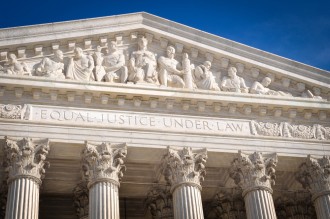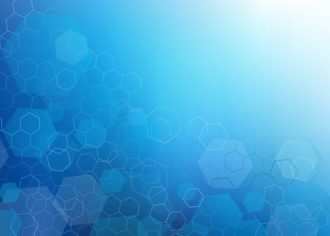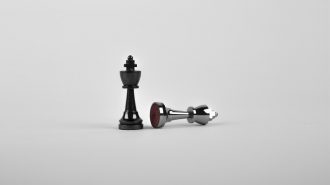
September 7, 2017
At The Bench: 2017 Mid-Year Case Review
Impression Prods. v. Lexmark Int’l, 137 S. Ct. 1523, 581 U.S. ___ (2017)
The Supreme Court held that all patent rights are exhausted upon the first sale of a patented product, regardless of where the sale is made or whether a patentee attempts to impose any restrictions on the sale. While the patentee may still have the ability to enforce such restrictions under contract law, patent infringement claims are no longer available once a sale is made. Patentees will now have to carefully evaluate sales of patented products both in the U.S. and abroad, including reviewing sales and license agreements in view of this new exhaustion standard. In certain circumstances, leasing patented products may be an attractive alternative to sales when the patentee wishes to avoid exhaustion. Another option may be to separate ownership of foreign and U.S. patents so that foreign sales do not exhaust U.S. rights.
TC Heartland v. Kraft Foods Grp., 137 S. Ct. 1514, 581 U.S. ___ (2017)
Reversing nearly three decades of Federal Circuit jurisprudence, the Supreme Court has changed the test by which venue is established for patent infringement defendants under 28 U.S.C. § 1400(b), which provides that “[a]ny civil action for patent infringement may be brought in the judicial district where the defendant resides, or where the defendant has committed acts of infringement and has a regular and established place of business.” Now, a domestic, corporate, patent-infringement defendant “resides” only in the defendant’s state of incorporation or where it has a “regular and established place of business” and committed acts of infringement, in stark contrast to where a defendant “resides” under general venue. Notably, broader venue under the general venue statute of 28 U. S. C. §1391(c) may still apply to declaratory judgement actions.
Life Tech. Corp. v. Promega Corp., 137 S. Ct. 734, 581 U.S. ___ (2017)
The Supreme Court, reversing the Federal Circuit, held that patent infringement under U.S. law does not cover the supply of a single component of a multicomponent invention assembled abroad, because a single component is not “a substantial portion” of a patented invention. Life Technologies had a license from Promega to make and sell a patented five-component kit for law enforcement purposes. Four components were manufactured in the U.K., while a single component was manufactured in the U.S. and thereafter sent to the U.K. and incorporated into the kit. When Life Technologies began selling the kit for non-law enforcement purposes (outside the licensed field), Promega sued for patent infringement. 35 U.S.C. § 271(f)(1) generally provides liability as a patent infringer of whoever without authority supplies from the U.S. “all or a substantial portion of the components of a patented invention” as actively inducing the combination of such components outside of the U.S. where the patent would be infringed if such combination occurred within the U.S. The Supreme Court held that that § 271(f)(1) does not cover the supply of a single component of a multicomponent invention, because one component is not “a substantial portion,” regardless of the importance of the component to the claimed invention. Therefore, Life Technologies was found not to have infringed the patent.
Sandoz v. Amgen, No. 15–1039, slip op., 582 U.S. ____ (June 12, 2017)
The 2009 Biologics Price Competition & Innovation Act (BPCIA)1 provides for an exchange of information about patents to simplify litigation before FDA approval. The exchange of information between the biosimilar applicant and the manufacturer of the reference product (the “reference product sponsor”) has been called a “patent dance,” as each party experiences a carefully orchestrated series of obligations that unfold during the course of procedures provided in § 262(l).
The Supreme Court held that the “patent dance” is not mandatory. Although § 262(l)(1)(b) provides that a biosimilar applicant “shall provide to the [reference product sponsor] . . . , confidential access to the information required to be produced pursuant to paragraph (2),” § 262(l)(9)(C) authorizes the reference product sponsor—but not the biosimilar applicant—to bring suit if an application is submitted to the FDA without patent disclosures being made. Amgen argued that “shall provide” in (1)(B) means that the patent dance disclosures are mandatory, but Sandoz argued (and the Court agreed) that because (9)(C) describes consequences that follow if the information is not provided, this means that the biosimilar applicant is free to withhold disclosure and simply take the penalty specified in (9)(C).
This is an especially favorable outcome for biosimilar applicants and a correspondingly unfavorable outcome for reference drug sponsors because it allows biosimilar applicants to choose, for their own convenience, whether they prefer the ordered predictability of the “patent dance” or the greater confidentiality of the (9)(C) process. The coordinated disclosures of the “patent dance” can take a long time, so the (9)(C) path is likely faster if the biosimilar applicant is confident about its non-infringement and invalidity positions. On the other hand, the (9)(C) path gives the reference product sponsor nearly complete control over the patent litigation process. If the biosimilar applicant is uncertain about which patents are likely to be asserted, the biosimilar applicant may prefer to engage in the “patent dance,” to retain some control over which patents may be asserted and when and where the litigation happens. Going forward, the choice between the “patent dance” and (9)(C) will be an important decision for each biosimilar applicant to consider before filing an application with the FDA.
SCA Hygiene Prods. v. First Quality Baby Prods., 137 S. Ct. 954, 581 U.S. ___ (2017)
The Supreme Court eliminated availability of the laches defense in claims for patent infringement damages brought within the six year statute of limitations period. However, equitable estoppel is still available to limit claims of patent damages. Furthermore, laches may still be available to bar equitable remedies, like injunctions to halt sales of infringing products. The SCA holding is beneficial to patent holders in that it limits the defenses available to an alleged infringer. The elimination of the laches defense to bar a claim for damages brought within the limitations period allows patent holders more time to assess the value of a potential infringer’s products before bringing suit. The potential delay in bringing suit may be detrimental to accused infringers that invest in manufacturing during a period of silence by the patent holder.
Helsinn Healthcare S.A. v. Teva Pharm. USA, Inc., 855 F.3d 1356 (Fed. Cir. 2017)
So far, the meaning of “on sale” under AIA 35 U.S.C. § 102(a)(1)2 has not changed from pre-AIA 35 U.S.C. § 102(b). In Helsinn, the Federal Circuit held that in enacting the AIA, “Congress did not change the meaning of the on-sale bar or disturb settled law.” The Federal Circuit found that the bar applies if the fact of the sale is public, regardless of whether the sale disclosed the invention. While finding Helsinn’s sale to have been publicly disclosed here, the panel declined to broadly hold that sales must always be public in nature to be a patent invalidating activity under AIA § 102(a)(1). Helsinn has petitioned for en banc review by the Federal Circuit.
Eli Lilly & Co. v. Teva Parenteral Meds., Inc., 845 F.3d 1357 (Fed. Cir. 2017)
The Federal Circuit found liability for divided infringement of method claims (steps performed by two distinct parties) notwithstanding that the relationship between the parties did not impose a legal obligation for performance of a step.3 The court held that for a physician-patient relationship, where the physician establishes the manner and timing of the patient performing a distinct step, this relationship can be sufficient to constitute liability for joint infringement.
[1] 42 U.S.C. § 262(l).
[2]AIA 35 U.S.C. § 102(a)(1) provides “NOVELTY; PRIOR ART.—A person shall be entitled to a patent unless—(1) the claimed invention was patented, described in a printed publication, or in public use, on sale, or otherwise available to the public before the effective filing date of the claimed invention.” Id. (emphasis added).
[3] Typically, divided infringement is found for relationships imposing a legal obligation for the performance of a step, such as principal-agent, contractual arrangements, and joint enterprises.





































